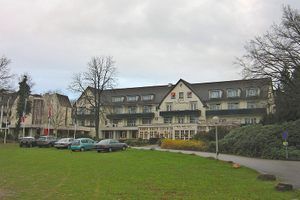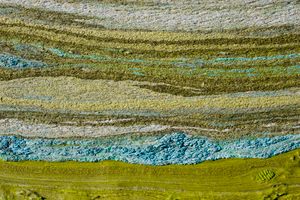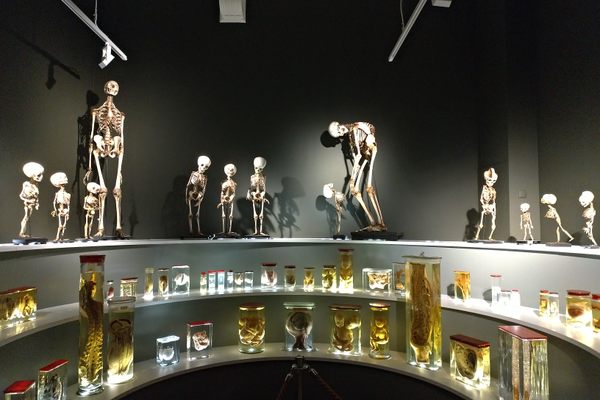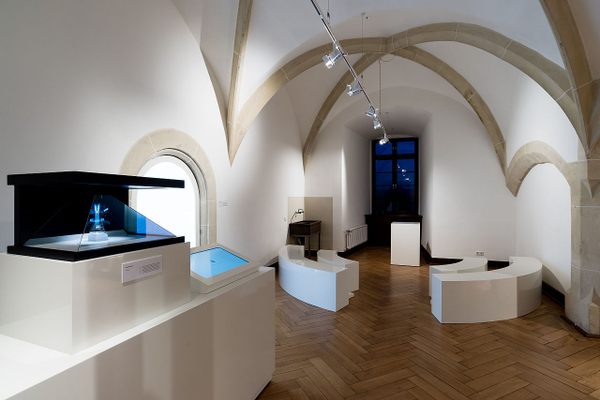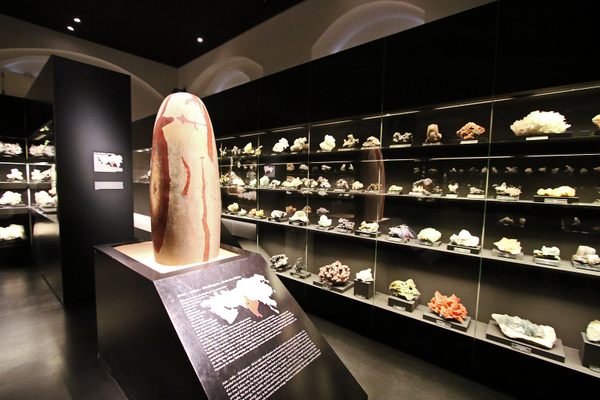About
Even before entering the World Soil Museum, the ombré shades of the building evoke freshly shoveled earth. Reddish-brown and tan hues create the appearance of layers of soil, called horizons. The exterior walls are coated with clay loam, a type of soil used to construct houses since ancient times.
Inside, about 90 monoliths are affixed to the walls. These five-foot slabs of soil give visitors a deeper understanding of a vibrant subterranean world. Each monolith was extracted from a pit dug to the bedrock, then hardened with lacquer and preserved to look as the soil did in the ground. Combinations of minerals, organic metals, and water content help determine their colors, from browns and reds to layers of green and blue, and even a purple soil from Zambia.
Like tree rings, monoliths can tell the story of a particular landscape, from historical events, such as a volcanic eruption, to soil quality and environmental conditions. For example, the museum’s permafrost displays from Greenland record frozen soils that store carbon; rising global temperatures are now thawing Arctic permafrost, releasing significant amounts of carbon dioxide and further impacting climate.
The soils on display are a small fraction of the museum’s 1,200 monoliths from 85 countries collected over more than five decades. They include soils from agricultural lands and inhabited areas, but also more inaccessible terrain such as deserts, mountains, and rainforests. Particularly challenging to preserve are water-saturated peat soils, which shrink considerably when preparing the monolith.
The museum also collaborates with artists to highlight the aesthetics of soil and how it connects to science. Current artist-in-residence is Kate Foster, an environmental artist in Scotland and the Netherlands, uses drawings, shadow play, excavated soil, and other mediums to focus on peatlands, a type of wetland found worldwide, from bogs to swamp forests. In the past, the museum has also featured the paintings of noted Dutch artist Herman de Vries who has incorporated soil in his art for more than four decades.
The museum is the public face of ISRIC World Soil Information, an independent foundation that includes a repository of about 7,000 reference samples of soil available to researchers.
Related Tags
Know Before You Go
The World Soil Museum is located on the campus of Wageningen University, about an hour from Amsterdam. The museum is open on Wednesdays, 1:30-5:30 p.m. and admission is free. A guided tour in English or Dutch is recommended and can be scheduled by appointment, Monday through Friday, 9 a.m. to 5 p.m. Tours are for groups of five to 30 people, and fees are determined by duration and scope.
Published
March 8, 2022









